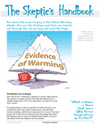|
|
By Jo Nova
It’s just another day on the job to save the world from man-made pollution
In a quest to make the weather a bit nicer in 100 years these trees needed to be cut down now so we can connect up a big hydropower “battery” for holy solar and wind power. The towers will be 75m high and the path through the forest, 140m wide.
When we ran off coal and gas power, we didn’t need pumped hydro. Fossil fuels protect the forests and hills of Australia.
These photos were posted by Geoff Wise on the “High Country of Australia” show us what our clean green future will look like:
“Here is where the power lines from the Snowy Hydro 2, at Lobs Hole, will cross the Tumut River ravine to go to the recently cleared site of the switching station in the Maragle State Forest, before heading north to feed into the National Power grid. The power lines will come from near the distant horizon. Look at the photos for more information. You can see this for yourself, as I was standing on Elliot Way when I took the photos, down hill, to the east is Kosciusko National Park and uphill, to the west is Maragle State Forest.”
Other parts of this project (not pictured here) will even cut through national park. Originally the 330kV interconnector towers were going to be put underground in the Kosciusko National Park, but after costs ballooned it was decided that the Snowy Hydro 2.0 pumped storage was “critical state significant infrastructure to NSW for economic, environmental and social reasons” and the National Park was not so significant. Who knew, socially, people in NSW benefit from pumped hydro?
Apparently renewable shareholders have friends in high places. Trees and koalas, not so much.
h/t Roger
Remember small business foresters and farmers are bad people, but industrial hydroelectricity helps the environment. See how caring they are with their clearing…
Geoff describes how extensive these lines are: “One of the power lines from there travels through Maragle State Forest, then Bago State Forest. A second travels through from Cabramurra and next to the new switching station being built. Snowy Hydro 2 may add, 1 to 2, more lines, as two lines are going to the switching station.“
The standard joke on facebook with these photos is “look at the damage those brumbies have done!”:
 Clearing in the Snowy Mountains for high voltage lines (from Elliot Way) between Maragle and Lobs Hole. Because over the hill, feral brumbies are being shot from helicopters to “reduce their impact” on the Alpine wilderness.
Though some wonder if it’s more the high country colonial history that the bureaucrats are really trying to kill.
Geoff also notes the irony that electric vehicles will be everywhere in the renewable future, but they won’t be allowed in the Snowy hydro power station. He wonders, after all the combustion engines are gone, whether they’ll need those horses to pull the carts:
I received an email from a well informed commentator who noted that the Lobs Hole approval notice is allowed to kill and displace all sorts of things:
The Critical State Infrastructure Approval for the Lobs Hole and the Switching Station on KNP allows that no more than:
(i) 9.35 ha of Caladenia montana species habitat
(ii) 89.06 ha of Gang-gang Cockatoo (breeding) species habitat
(iii) 10.86 ha of Masked Owl (breeding) species habitat
(iv) 117.29 ha of Eastern Pygmy-possum species habitat
(v) 59.03 ha of Yellow-bellied Glider species habitat; and
(vi) 1.67 ha of Booroolong Frog species habitat
can be cleared for the development; and the developers have to minimise:
(i) the impacts of the development on hollow-bearing trees;
(ii) the impacts of the development on threatened species; and
(iii) the clearing of native vegetation and key habitat.
Apparently, the sanctioned clearing is offset by contributing or buying offset credits.
The question is, why can’t farmers within the Great Barrier Reef catchment area have the same option when managing their land? At the moment, bureaucrats scan satellite images and if any bare ground the size of a kitchen table is found on their land, they turn up and carry out an audit essentially accusing the farmer of environmental degradation of the Great Barrier Reef.
— R
Some endangered industries are more protected than others.
10 out of 10 based on 114 ratings
8.9 out of 10 based on 16 ratings

By Jo Nova
The Renewable Crash Test Dummy hits a fork in the road
Finally the Australian opposition is bravely popping the sacred cow of the Energy Wars. The Dummy nation was aiming for the holy grail “low emission” grid that no other nation had tried. The driest continent on Earth, with small hydro, and no extension cords to any nuclear power, were going to build the perfect grid based on the wind and sun alone. It was always doomed to fail, it was just a question of how much money would be burned at the pyre before the Crash Test Dummy crashed.
Because they didn’t do their homework, and the fan-media didn’t ask them to, the Labor Party set themselves up to fail. They left their left flank wide open, and the Opposition is finally launching the missiles that have been there all along in the mist. The ultimate low-emissions generator was always and obviously the unspeakable nuclear power. It’s a fifty year old technology. If anyone actually cared about carbon dioxide, they would have done this instead of the Kyoto scheme in 1997. But it was all a theater of grift and graft for unreliable, fairy energy, or for self-serving players who like trips to ski clubs in Davos, or jobs after politics with the UN or “energy companies”. (Not mentioning any names, Matt Kean).
Australia doesn’t need more “large-scale renewables” says the Opposition party, offering nuclear power instead of renewables technohell
Finally the dirty laundry of renewable power might be hung out to dry in an election. After ten years of rampant renewables growth in Australia, a dawning realization is sweeping the nation that wind and solar are not cheap, and will never be cheap. It’s hard to believe only two years ago Labor won on promises to bring electricity costs down by $275 dollars a household, only for prices to rise by $750 instead. At the same time, the awful reality of collecting low density energy is all too apparent in regional areas where developers are swarming to cover the land in renewables infrastructure. No one wants industrial plants in their backyard, but when we have to build 10,000 kilometers of high voltage towers, 40 million solar panels, and 2,500 bird killing turbines — its in everyone’s backyard.
Suddenly the real environmentalists are the ones who just want to build seven small nuclear plants on old industrial sites. Save the eagles, spare the whales, and don’t club the koalas, OK? The opposition are promising to build nuclear plants on the old coal sites, give cheap electricity to locals and to block major offshore wind projects and oppose large solar plants too. As they so aptly say, the low hanging fruit on this tree are already done.
This is the Deputy Opposition leader saying what was unthinkable only a year ago:
By Rosie Lewis, The Australian
Nationals leader David Littleproud has said a Coalition government will look at alternative energy sources so it doesn’t have to pursue large-scale renewables such as wind and solar, after suggesting he would axe an offshore wind industry if elected.
Amid a pre-election brawl over climate and energy policy, Mr Littleproud said the Coalition would send “strong investment signals” that Australia didn’t need large-scale industrial wind farms onshore or offshore or other big renewable projects.
Mr Littleproud also indicated to The Australian that he was opposed to large-scale solar farms, saying: “We’d like to look for whatever option we can so we don’t have to pursue large-scale renewables full stop.
“All the low-hanging fruit for large-scale renewables has been done, we’ve now got to go out beyond that.
He had to clarify that one big wind farm offshore would go ahead, but one that was just approved this week in the Illawarra, would not. The Coalition says the Commonwealth will own the nuclear plants. They’ll build them in the Latrobe Valley in Victoria, the Hunter Valley in NSW, Collie in WA, Port Augusta in South Australia, and the southwest Queensland electorate of Maranoa.
According to The Australian Peter Dutton said in April that the “first small modular reactors could be operational by the mid-2030s, following a meeting with British manufacturer Rolls-Royce, which told the Coalition it could deliver them at an estimated $3.5bn to $5bn each. Rolls-Royce is contracted by the Australian government to supply the nuclear reactors for the AUKUS submarines.”
Nuclear power is the sleeper policy — even half the Greens agree the government should be talking about it
Last year political number crunchers suddenly realized there is no mass anti nuclear protest movement here, just the ghost of one from forty years ago. Polls came out in May 2023 showing that with virtually no national discussion about it, right out of the starting blocks, fully 56% of Australian voters thought the government should seriously consider small modular reactors (SMRs), and only 12% disagreed. Which is all the more astonishing given that only 24% of Australians even knew about SMRs at the time.
Wait until Australians find out there are 440 nuclear power plants in the world, and that even Armenia has one. And Belarus.
 The Australian: commissioned by the Minerals Council of Australia | Insightfully polled 2,400 people, May 2023.
When will we get over the adulation of roof top solar?
Not everything about the Coalition plan is smart, Australia already has a glut of solar power at lunchtime, so promising to put more on roofs in capital cities isn’t going to help. It’s just more electricity we can’t store at a time of day when we don’t need it which non-solar households have to subsidize. The duck curve at noon vandalizes the market for reliable generators, which have to recover costs at breakfast and dinner time anyway. And one cloud can cover a million suburban houses simultaneously. There goes another gigawatt.
If a large solar plant doesn’t make sense in Alice Springs where there is no cheap coal fired power, it certainly doesn’t make sense in Sydney where there is. Most new solar panels in capital cities are a waste of glass, metal and labor that someone has to pay for. They are a pagan shield against the storms, supposedly protecting coral reefs from somewhere in Parramatta.
But we all had cheaper electricity when no one had solar panels.
Thou still shall not question the science
The bottom line, which neither party is saying, is that we need to get the science right before we start pretending to change the weather — not after we blow a trillion dollars making high voltage temples to fend off the evil spirits. Nuclear plants are good, but coal plants are cheaper, and CO2 is a gift from God. The world should pay Australia to burn more of our coal and feed the forests and fields.
Who audits the foreign committee in Geneva? Which scientists are paid to find holes in the IPCC religious sermons about boiling oceans? We’re betting the nation on sacred-cow science.
Once we win the energy war we need to win the science war. Your donations keep me going. Thanks to the readers who help make this work possible.
—————-
*The conservative Coalition is the pairing of the Liberal Party and the Nationals.
9.9 out of 10 based on 128 ratings
10 out of 10 based on 10 ratings

By Jo Nova
The cost problem is solved (for all the wrong reasons), but it’s still not enough
Around the world, governments are trying to force people to buy electric vehicles because they are nice people who are worried about polar bears. And since drivers out there all believe in climate change, according to all the pollsters, it shouldn’t be a big ask. (Who wouldn’t want to save the Earth?)
Supposedly, just 10 years from now, they told us, we wouldn’t be able to buy a new combustion engine car at all. Instead, not only are sales of new EV slowing rapidly, to the point where there is a glut, but as prices fall for used cars customers are not rushing out to pick up the cheaper second hand EVs either.
Look at how fast the turnaround in this market has been in the last year — a 25% price premium– gone:
Kaya Ginsky, CNBC
The difference between the price of a used Tesla Model 3 and BMW 3 Series shows how a “premium” associated with EVs in the initial boom has been erased, according to an analysis from iSeeCars.
The decline has been dramatic over the past year. In June 2023, average used EV prices were over 25% higher than used gas car prices, but by May, used EVs were on average 8% lower than the average price for a used gasoline-powered car in U.S. In dollar terms, the gap widened from $265 in February to $2,657 in May, according to an analysis of 2.2 million one to five year-old used cars conducted by iSeeCars. Over the past year, gasoline-powered used vehicle prices have declined between 3-7%, while electric vehicle prices have decreased 30-39%.
And all leading indicators are down. Fewer people have plans to buy an EV, and the pool of people who won’t even consider buying one is growing:
A Gallup poll of Americans in April found ownership of EVs increasing by 3% annually, but an equal percentage decline in consumers who indicated serious interest in buying an EV, down from 12% to 9%. Overall, 35% of Americans said they might consider buying an EV in the future, down from 43% last year.
In Germany, the formerly great industrial empire, EV sales are down 30% compared to this time last year, but sales of petrol engines are up 2% and diesel cars are up 3%.
Pierre Gosselin at NoTricksZone tells us the German Federal Motor Transport Authority (KBA) reports a 30.6% fall in registration of new electric cars compared to May a year ago.
CO2 emissions of new German cars also rose 3.3%…indicating the green transition has stalled and is reversing.
Hat-tip: Blackout News
The KBA also adds that 89,498 passenger cars were equipped with a gasoline engine – an increase of 2.1 percent compared to the same month last year.
44,893 new cars were diesel-powered, an increase of 3.2 percent compared to the same month last year.
History books will be written about the crazy political EV bubble.
9.9 out of 10 based on 120 ratings
9 out of 10 based on 11 ratings
7.8 out of 10 based on 29 ratings
8.5 out of 10 based on 27 ratings
By Jo Nova
How much back-up do we need for our 11.5 gigawatt wind system? About 11.4 gigawatts.
Wind energy failed on Thursday at what must be close to a record low — with barely 88MW of production from 11,500MW of wind turbines. That’s about 0.7% of total nameplate capacity.
With construction costs running at $2 million for every theoretical megawatt of turbine, that’s $20 billion dollars of machinery sitting out there in the fields and forests of Australia producing about as much as two diesel generators.
We have 84 industrial wind plants across 5 states of Australia, and the green band below was their total contribution to our national electricity needs on Thursday — put your reading glasses on.
Things were even worse in Western Australia, where at the one point that afternoon when I happened to look the state’s total wind generation was minus 11MW. Some wind turbines were drawing a megawatt here and there, perhaps to keep the turbines rolling so they don’t get flat spots on bearings.
It was an attack of another climate-denying high pressure cell on Thursday. There was no place in Australia good for wind generation except (maybe) for our research stations in Antarctica.
Again, this is now a feature of our weather dependent electricity grid, unless the government can stop these high pressure cells or conquer New Zealand and build a bridge.
But sadly, there is no “building” our way out of this. One thousand more wind-plants won’t keep many lights on, and $100 billion dollars of interconnectors will not connect us to wind power if there is a high pressure cell 5,000 kilometers wide, which there is every two or three weeks.
Wind power went from producing 7.2GW in the early hours of Wednesday to 0.09GW by lunchtime Thursday. It was sheer luck it bottomed out at lunchtime on a sunny day when solar panels were at their peak. Seven gigawatts of power disappeared in just 36 hours. If we lost 7 gigawatts of coal plants in a week, we’d never hear the end of it.
It’s the minimums that matter
Paul McArdle at WattClarity has all the grid data, and provides a spectacular graph of the system-wide peaks and troughs of our wind generators over the last 13 years which he has updated recently to highlight how bad the months of April and May were for wind production in Australia. Click to enlarge this graph to really appreciate the devastating message. While the total wind farm “capacity” has grown massively (the grey columns on the graph), the minimum lowest guaranteed production has not shifted much at all. This is the generation we can rely on, the minimum monthly points are marked in dark green at the bottom.
Ten years ago the lowest monthly minimum was practically zero (reaching just 3.7MW one day in July 2014). But since then we’ve built 8,000 MW of extra wind power, at an effective cost of $16 billion, and only bought ourselves effectively two diesel generators worth of reliable electricity?

Source: WattClarity
If someone asks how much wind can we rely on, the answer is “about one percent”.
UPDATE: Paul McArdle at WattClarity confirms that this event occurred, was only 88MW and 0.77% of capacity, and that it was not caused by any human management or curtailment, just by being becalmed.
h/t Apoxonbothyourhouses
9.9 out of 10 based on 122 ratings
9.4 out of 10 based on 16 ratings

By Jo Nova
The deadliest climate question: How many degrees cooler will that be?
Ask it now, ask it later, before breakfast and while watching “the news”. Teach the children to ask in kindy.
We know the IPCC wildly exaggerates, but pretend they’re right and it still doesn’t make any sense. Richard Lindzen, Will Happer, and William van Wijngaarden took the IPCC at its word and calculate that even if we get to Net Zero by 2050, will only make the world a tiny bit cooler, assuming they’re right (which they’re not) and assuming the rest of the world joins in (which they aren’t).
Say we stop all coal, oil and gas, redesign our energy grids, cull the cows, give up our holidays, our cars and ride bikes to work, fill the oceans with windmills, and turn our thermostats down. We spend a quadrillion dollars on a Moonshot to stuff a perfectly good fertilizer in holes underground, and instead of getting to the moon, the world is barely 0.28 degrees C cooler. That’s a half of one lousy Fahrenheit less that it would have been. This ladies and gentlemen is the best case scenario for the global action plan against the 6th mass extinction.
This is why 100,000 people in private jets meet each year in Egypt, or Doha, or Azerbaijan. (Or so they say).
The whole United States of America could go Net Zero by 2050 and it would, at best, change global temperatures by three one-hundredths of a degree, which we can’t even measure. Rounded to the nearest tenth of a degree that’s a big 0.0°C. And if the Sun does a bit more, then it’s even less.
R. Lindzen, W. Happer, and W. A. van Wijngaarden
Abstract:
Using feedback-free estimates of the warming by increased atmospheric carbon dioxide (CO2) and observed rates of increase, we estimate that if the United States (U.S.) eliminated net CO2 emissions by the year 2050, this would avert a warming of 0.0084 ◦C (0.015 ◦F), which is below our ability to accurately measure. If the entire world forced net zero CO2 emissions by the year 2050, a warming of only 0.070 ◦C (0.13 ◦F) would be averted. If one assumes that the warming is a factor of 4 larger because of positive feedbacks, as asserted by the Intergovernmental Panel on Climate Change (IPCC), the warming averted by a net zero U.S. policy would still be very small, 0.034 ◦C (0.061 ◦F). For worldwide net zero emissions by 2050 and the 4-times larger IPCC climate sensitivity, the averted warming would be 0.28 ◦C (0.50 ◦F).
Read the entire short paper here at the CO2Coalition: Net Zero Averted Temperature Increase
And Christopher Monckton points out the cost to benefit ratio for this $2 Quadrillion dollar project is every billion dollars we spend cools the world by 20 millionths of a degree.
So let’s keep all the national science institutions that pointed out what a terrible deal this is for all our nations, and shut down the rest — NOAA, NASA, Hadley, CSIRO, NIWA, BoM, Potsdam, NRC, ARC, and while we’re at it — the ABC, BBC, the CBC because they should have asked better questions, like “how many degrees will that cool us?”
UPDATE: And a long time ago Dr David Evans calculated that if Australia got to Net Zero and the IPCC were right, we would “cool” the world by 0.0154°C.
10 out of 10 based on 119 ratings
10 out of 10 based on 15 ratings
 By Jo Nova By Jo Nova
We’ve reached a point of Maximal Bureaucratic Psychopathy in Science
That’s where committees of committees aim to improve your health by giving one human the ability to kill a billion.
In 2015 a scientist at Anthony Fauci’s agency thought it would be neat to mix two Monkeypox strains together to make a nastier one. For no reason anyone can explain, the National Institutes of Health’s Institutional Review Board thought it would be neat too, and approved it.
A normal person might worry that doddery Joe Biden has the nuclear codes, but all along, unnamed, unaccountable countless others might have their fingers on equivalent bombs, and they won’t need to input any codes to set off the bombs, just have a bad day.
The idea was to mix a deadly but slow strain of monkey pox with a tamer monkey pox strain that spread quickly. This could have created a virus with the “best of both” — an agent with a 15% fatality rate and a reproduction rate of 2.4, which would make it very much “pandemic potential”. (With one infected person infecting 2.4 others, this was a similar rate of spread to the original Wu-Flu, but so much deadlier).
So any normal human would know this was a stupid risk to take, but the NIH did it anyway. Worse, they knew it was bad, and they hid the approval for nine years. Even when the investigators from a House Committee came knocking, they concealed the project approval. They now say the experiment was never done, but they can’t point to a single email or memo to show it was stopped. The original approval has only recently been reversed.
As long as the festering mess that gave us Covid is not dealt with — it’s just a matter of time before we get the next one.
Four years on and no one has been sacked for the lab leak that infected the world, or the cover up that hid the origin.
Fauci swears that a biosecurity breach in Wuhan could not possibly have anything to do with his former agency NIAID, but since they hid the monkeypox approval, and told journalists it never happened, then stonewalled and denied it to a congressional committee, Fauci’s assurances are worth about as much as nine years of active deception suggest.
Reckless Gain-of-Function experiments with viruses is like letting the local university make nuclear bombs in basements of skyscrapers. Except it’s more dangerous.
Is there any reason the NIH should not be razed to the ground?
Thanks to David Archibald for sending the story:
For nearly nine years Anthony Fauci’s institute concealed plans to engineer a pandemic capable mpox virus with a case fatality rate of up to 15 percent, congressional investigators revealed in a new report Tuesday.
In June 2015, a scientist at the National Institute of Allergy and Infectious Diseases received formal approval from the National Institutes of Health’s Institutional Review Board for experiments expected to engineer an mpox virus with high transmissibility and moderate mortality.
NIAID — the institute Fauci oversaw for nearly four decades and which underwrites most federally funded gain-of-function research — concealed the project’s approval from investigators with the House Committee on Energy and Commerce over the course of a 17 month-long investigation.
It’s getting hard to tell the difference between an enemy threat and a normal government operation:
Mpox, formerly known as monkeypox, caused a public health emergency in the U.S. from August 2022 to February 2023. It is endemic in Africa. The more deadly clade circulates in Central Africa (clade I) while the more transmissible clade circulates in West Africa (clade II). Mpox has infected more than 20,000 people and caused more than 1,000 deaths in the Democratic Republic of Congo, where clade I predominates, according to the Centers for Disease Control and Prevention — though some experts believe that is an undercount of true cases. A strain of the clade II virus drove the American outbreak.
The mpox experiment first came to light in a September 2022 article in Science.
The gain-of-function project proposed by NIAID virologist Bernard Moss would splice genes conferring high pathogenicity from the clade I virus into the more transmissible clade II virus. The new “chimeric” (combined) virus could have retained up to a 15 percent fatality rate and a 2.4 reproductive number, a measure of transmissibility indicating every sick person could infect up to 2.4 people on average, giving it pandemic potential.
When it’s a matter of life and death, why not put a lying agency in charge of checking its own funding? This is what the experts do:
“The new [Office of Science and Technology Policy] continues to give funding agencies, like NIAID, primary responsibility for oversight of GOFROC [Gain of Function Research of Concern] and DURC [Dual Use Research of Concern] experiments involving potentially dangerous pathogens,” the committee’s report reads. “In almost any other scientific field or industry, this arrangement would be immediately recognized as a conflict of interest, necessitating independent review and oversight.”
They are talking about some of the nastiest plans known to man. DURC or “Dual Use Research of Concern” is the polite way to label a discovery that has a dual purpose, meaning it could be a cure for cancer or a weapon of war. They could just as easily have called it Potential Bioweapons of War, but they don’t want to scare the funders (us).
What if researchers were high on the thrill of the discovery-of-a-lifetime and most of the costs and risks (global pandemics) are externalized, and the committees that approved them worked as well as “peer review” does in the rest of government strangled science?
What if some of those committees were infiltrated by foreign adversaries? That might actually improve things. The Russians might leak the news of what’s going on in Western labs to the media…
The one “good” thing about this story is knowing that the last pandemic could have been so much worse.
Mad scientist image by Lisa Yount from Pixabay
9.8 out of 10 based on 103 ratings
9.2 out of 10 based on 14 ratings

By Jo Nova
Here we go again. It’s another round of the climate wars in Australia. It’s the issue that never dies, because global weather control is a stupid idea levitating on righteous indignation and a hundred billion dollars. As long as it floats, it’s the Hindenburg of National Energy Policy. It will only end when there’s nothing left to burn.
This time, the opposition leader, Peter Dutton, has said what all the grown ups already know — that the 82% renewables target by 2030 that Labor legislated is doomed and we should delay it. Two years after ignition, everyone knows the NetZero rocket is impossible. Renewable investment has ground to a halt, people are not buying EV’s, farmers don’t want the transmission lines, coastal towns don’t want the wind towers, project costs are doubling and tripling, and Florence the borer is still stuck in a short hole that is meant to be a long one. Worse, we’ve already got more solar power than the grid can handle and extra solar power is so useless we’re about to start charging people who carelessly add to the glut at lunchtime.
Peter Dutton is sadly still saying we should do “Net Zero by 2050” — which will stop him mocking the whole pagan religion of weather control, but he is offering a real alternative — we can stop banging our heads on the wall for a few years.
The government meanwhile is fighting back with their best missives of scorn and damnation. Apparently this will lead to the awful affliction called “pariah status”. The world won’t want to dance with Australia, or something. Or, more likely, Sydney Harbour might drop a few spots on the Green Backpacker Holiday Guide. Like we care.
The media leapt to declare hyperbolically that “Dutton is pulling out of the Paris Agreement” because, being globalist junkies themselves, they thought this would be an insult. But instead of being a shocking misstep those headlines may have earned him fans. The EcoWorriers seemed to have forgotten that at the drop of a hat, back in 2018 48% of Australians said they’d be happy to pull out of “Paris”. That was without any discussion at all. Half the country didn’t care less. Imagine if we had a debate now with the cost-of-living-dog chewing on voters ankles?
Paris is a sacred totem for believers to dance around. But its almost all theater — China agreed to do nothing, and most nations will miss their targets. Now even the UN admits the world will crash through Paris Agreement goals by a factor of two for 2030.
The pimps for Paris can hardly threaten Australians with twice as many cyclones next year, or 20% more floods by 2025. They know, and we know, that the benefits of “Net Zero” are just social approval points on a Leftist dance card. There is no productivity growth, no cheaper electricity, no nicer weather coming our way — at least not for a hundred years (even in theory). So when someone pops the bubble, all they can fire back with are social credit costs not real ones. Dutton will make us “the Global Laughing Stock” they say, lamely. He will risk our membership of the Paris Agreement — the club which we pay for, and which includes practically every nation on Earth — (as if the UN would want to take its claws out of any wealthy donor).
As Graham Lloyd remarked: “Peer pressure is the only tool at the UN’s disposal. “
The non-binding compromise at the heart of the Paris Agreement that allowed US president Barack Obama to sign it without seeking the approval of congress makes the Paris Agreement a voluntary affair. .. Put bluntly, if countries were excised from the Paris Agreement for not meeting high expectations, it would be a gathering of none.
The Labor Party will find in the next election, like the last “climate election” in 2013, that they have very little material benefit to offer the voters. But no one will believe the “cheaper electricity bill” lie.
Labors target is a 43% emissions reduction of our 2005 emissions by 2030. Most of the reduction will come (in their dreams) from being 82% “renewable” for electricity (up from 32% renewable now).
Just to put that in perspective, here’s the graph of Australia’s total energy consumption which at the end of 2022 was 85% fossil fueled.

To reach this frivolous quest, Australia is supposedly going to install 22,000 solar panels every day and a new wind tower every night, somehow we’ll install 10,000 kilometers of high voltage power lines, and we will find $1.5 trillion spare dollars to pay for it all.
The actual “Paris Agreement” Australia signed was to reduce 2005 emissions by 26 to 28% by 2030. It was Labor in 2022 that raised the stakes and legislated the 43% cut, just to impress their friends at Davos or something.
So many political careers have died on “climate change” and yet few political commentators seem to realize why.
Image by Roy Snyder from Pixabay
9.9 out of 10 based on 127 ratings
9.2 out of 10 based on 17 ratings
By Jo Nova
The spell is broken
Thirty years of crafting a fantasy narrative was fine while countries floated on a cloud of endless easy money, but those days are over.
Counting is still underway in the EU elections, but the Greens appear to have lost around 20 seats, shrinking from 74 seats to 53. In Germany, the Green-stranglehold of Europe, exit polls suggest the Green vote fell from 20.5% to 12%.
In a shock, Marine Le Pen’s party in France doubled Macron’s party vote achieving 30% of the vote to his 15%, whereupon Macron called an emergency election, hoping to save a few extra spots in France’s Parliament before the “Far Right” really wakes up.
The “Far-Right” of course, being any party which doubts that bicycles can stop storms:

Despite 242% of Nobel prize winning experts being certain that life on Earth will be destroyed by 2034*, climate action was not a priority for most Europeans.

Newspaper journalists though have different priorities to most voters. There go those climate ambitions…
 The result comes amid a broader shift to the right and a green backlash — or “greenlash” — against policies designed to tackle the climate crisis and protect the environment. Some newspapers don’t just have different priorities, they speak a different language:

Who are these parties that deny that we have a climate?
Five years ago The Guardian called it a “Quiet Revolution Sweeping Europe” as the Greens went from fringe idealists to “potential kingmakers”. Instead it was a five year reckless experiment that trashed historic industries and threatens a lifestyle that took a thousand years to create.
The real Kingmakers in the EU who were panicking about climate change last week, are now suddenly non-committal about inviting the Greens to talks. It was always about power for Ursula Von der Leyen and sadly she is still there. There is still much to do.
The wonderful Mark Steyn on the EU elections and the media massaging:
Indeed, between [Marine Le Pen’s] triumphant National Rally and M Zemour’s Reconquête (the Reconquest party), what the BBC and even the Telegraph insist on calling the “far right” got just shy of forty per cent of the vote. (M Zemour’s party is for those who think Mme Le Pen is no longer “far right” enough.) In Germany Olaf Scholz saw his party come third, behind the even more “far right” Alternative für Deutschland. Over a million of Scholz’s voters switched to the ooh-ever-so-far-right AfD.
So the “far right” are getting a lot nearer: maybe the Telegraph should try holding the telescope the right way round.
Instead, the media took consolation in finding the far-right rampage didn’t go quite as far as it might: in the Netherlands, Geert Wilders’ Freedom Party has gone from zero seats to six to emerge as the largest single Dutch party in the European Parliament – but all the experts are agreed that for some reason this is a wee bit of an under-performance.
UPDATE: Good news, the young voters are turning away:
[Google translated]
The AfD and CDU are particularly popular with young voters. Voting right is not a trend, but rather a matter of self-defence. The Greens are the main losers, as they have become the epitome of philistinism. They get the ridicule of the internet for free.
Both parties have lost their magic. Now things are getting even worse for the Greens. The new youth parties are called AfD and CDU. Of all things! Anyone who joins the Junge Union or the Workers’ Party for Germany today is a revolutionary. The middle class is green, or better said: the bourgeoisie. And who is alternative if they are on the side of the philistines?
For most young people, however, it is clear that they will not retire at 70, they will not buy a house, and they may not be able to support a family – and if they do, their children will grow up in problem areas, in rural wasteland or in an environment of left-wing indoctrination. Voting right is not a trend, not chic, not a whim. It is pure self-defense.
Read it all (in German)
h/t Willie Soon, Krishna Gans, Old Ozzie, David Wojick, Kim, Stephen Neil.
*How many climate experts said Antonio-Guterres Mr-Boiling-Planet was wrong?
Far-Right-Bell curve original author unknown. Seen on this tweet.
10 out of 10 based on 111 ratings
8.4 out of 10 based on 17 ratings
7.3 out of 10 based on 37 ratings
8.6 out of 10 based on 29 ratings
|
JoNova A science presenter, writer, speaker & former TV host; author of The Skeptic's Handbook (over 200,000 copies distributed & available in 15 languages).

Jo appreciates your support to help her keep doing what she does. This blog is funded by donations. Thanks!


 Follow Jo's Tweets
Follow Jo's Tweets To report "lost" comments or defamatory and offensive remarks, email the moderators at: support.jonova AT proton.me
Statistics
The nerds have the numbers on precious metals investments on the ASX
|

































Recent Comments